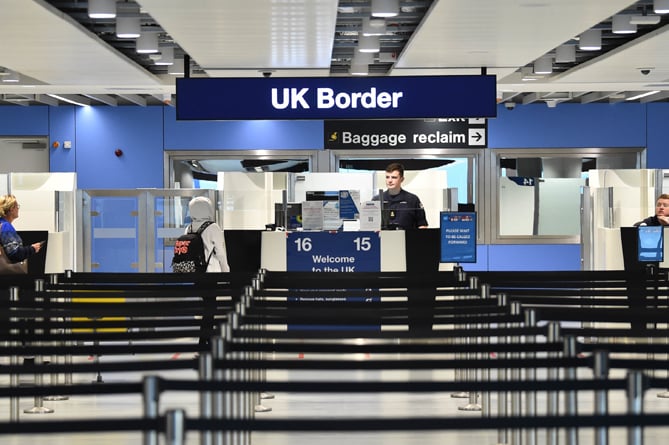Dozens of Afghan refugees were living in Ceredigion, Powys and Gwynedd at the end of March, new figures show.
The UK Government launched two schemes to relocate Afghan citizens in 2021 and 2022, in response to the Taliban retaking control of the country.
These schemes have a particular focus on helping those who worked with the UK during the war in Afghanistan, and vulnerable groups – such as women, children and LGBTQ groups.
For the first time, the Home Office has released figures on where Afghan refugees are staying in the UK.
This data shows 11 Afghan refugees were living in Ceredigion, 27 in Powys and 15 in Gwynedd at the end of March.
In addition, the figures show 105 Ukrainians living in Ceredigion, 269 in Powys and 209 in Gwynedd through the Homes for Ukraine scheme, which facilitates UK citizens to sponsor and temporarily house refugees fleeing the conflict with Russia.
In total, the UK has taken in 175,000 refugees through the sponsorship scheme and the Ukraine Family Scheme, which grants Ukrainians the opportunity to live with family in the UK. The two Afghan schemes – which aim to resettle refugees permanently – have seen just over 21,000 arrivals.
The Refugee Council charity said routes for Afghans trying to settle in the UK are "restrictive" and "complex".
Enver Solomon, CEO of the organisation, said: "Many people are left in a truly desperate situation, forcing them to embark on dangerous journeys in search of protection.
"That’s why we see so many Afghan refugees risking their lives crossing the Channel, while practically no Ukrainians have had to resort to a dangerous crossing thanks to the success and workability of the Ukrainian schemes."
"We must see the Government scale up its efforts and offer protection to Afghan men, women and children who are vulnerable to persecution by the Taliban, as well as other people fleeing war and persecution in other parts of the world," he added.
Data from the Office for National Statistics released on Thursday shows around 606,000 more people are estimated to have moved to the UK than left in the 12 months to December.
The ONS said factors contributing to relatively high levels of immigration include people coming to the UK from non-EU countries for work, study, and for humanitarian purposes, including those arriving from Ukraine and Hong Kong.
There were 75,492 asylum applications in the UK in the year to March 2023 – the highest total for any 12-month period since the year to March 2003.
Home Office data further shows nobody was receiving asylum support in Ceredigion, Powys or Gwynedd at this point.
Marley Morris, associate director for migration, trade and communities at the IPPR think tank said the government should avoid a 'knee-jerk' reaction to the net migration numbers and focus on clearing the asylum backlog instead.
"In response to people arriving on small boats, the government should ramp up safe and legal routes, seek a new agreement with France and the EU, and drop its inhumane plans to relocate asylum seekers to Rwanda," he urged.
A Home Office spokesperson said: "The UK has a proud history of providing protection for those who genuinely need it through our safe and legal routes. We have welcomed over a hundred thousand people from Ukraine and Hong Kong, and 9,113 Afghans under the Afghan Citizens Resettlement Scheme.
"It is, however, wrong to set these two sets of vulnerable groups against each other. Each crisis situation requires a tailored response and our bespoke schemes for Ukrainians and Afghans have provided a route to safety to the UK for tens of thousands of vulnerable people.
"We remain committed to reducing overall net migration, while stopping the boats and delivering control of our borders, prioritising tackling abuse and preventing dangerous and illegal crossings," they added.




.jpeg?width=209&height=140&crop=209:145,smart&quality=75)